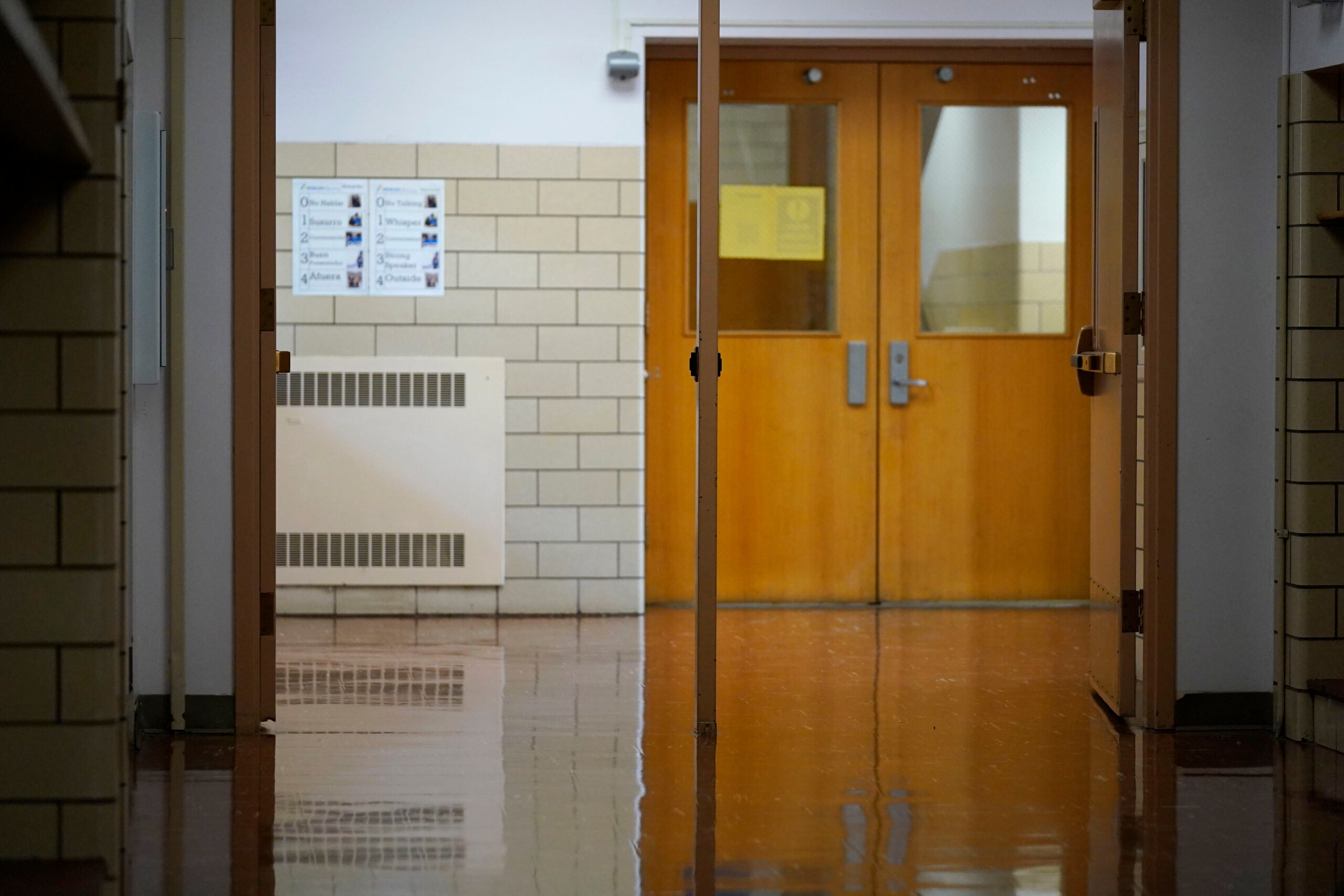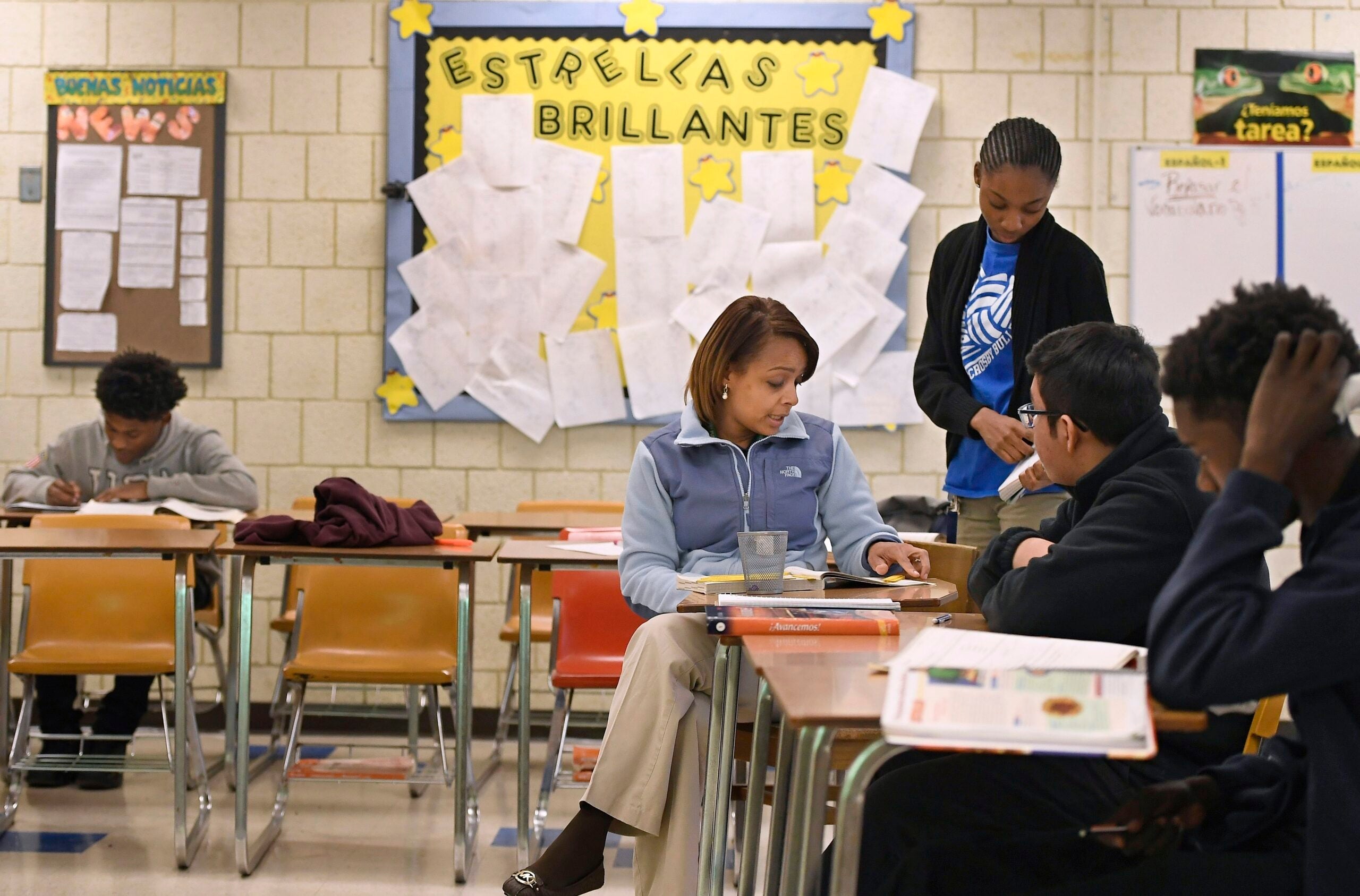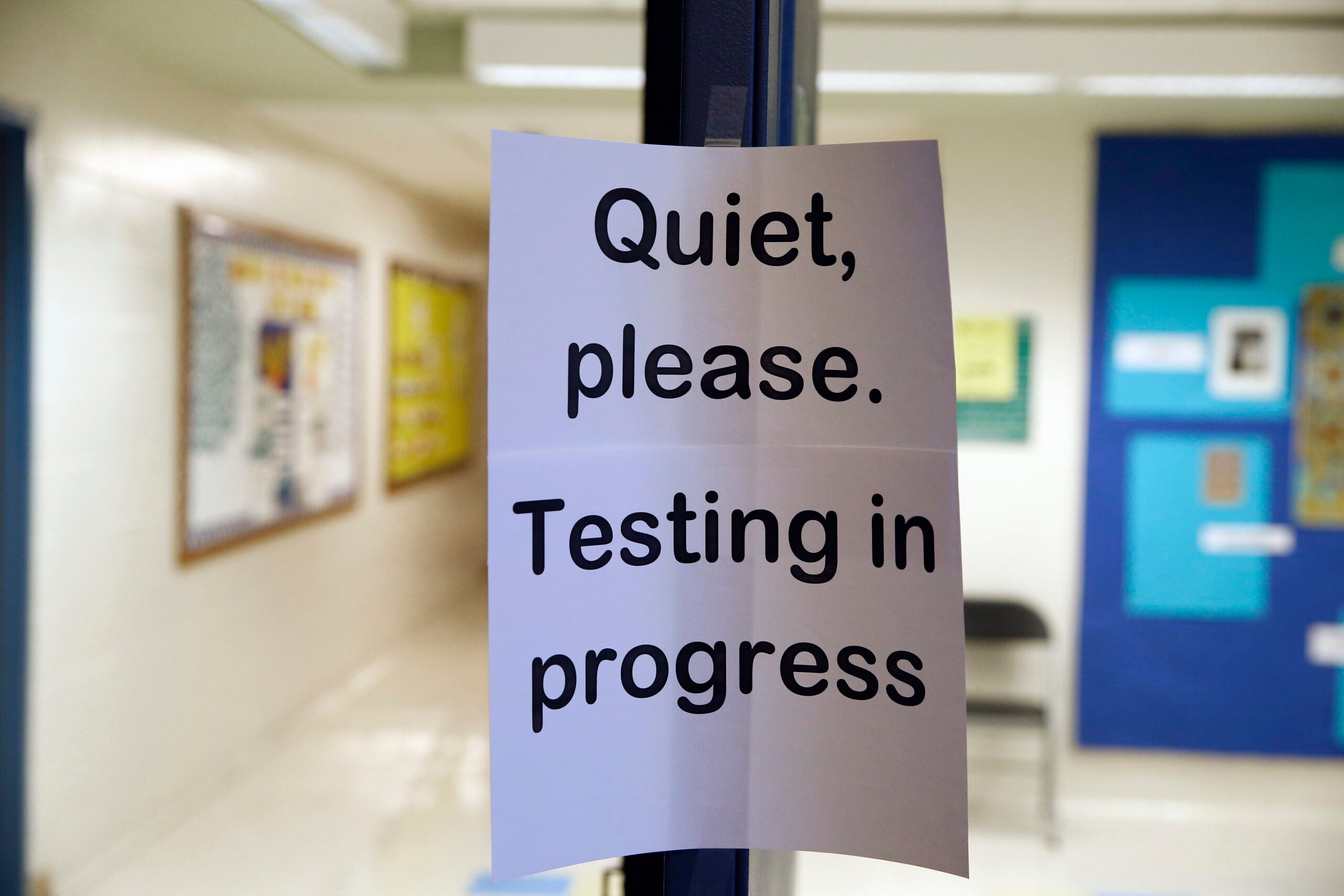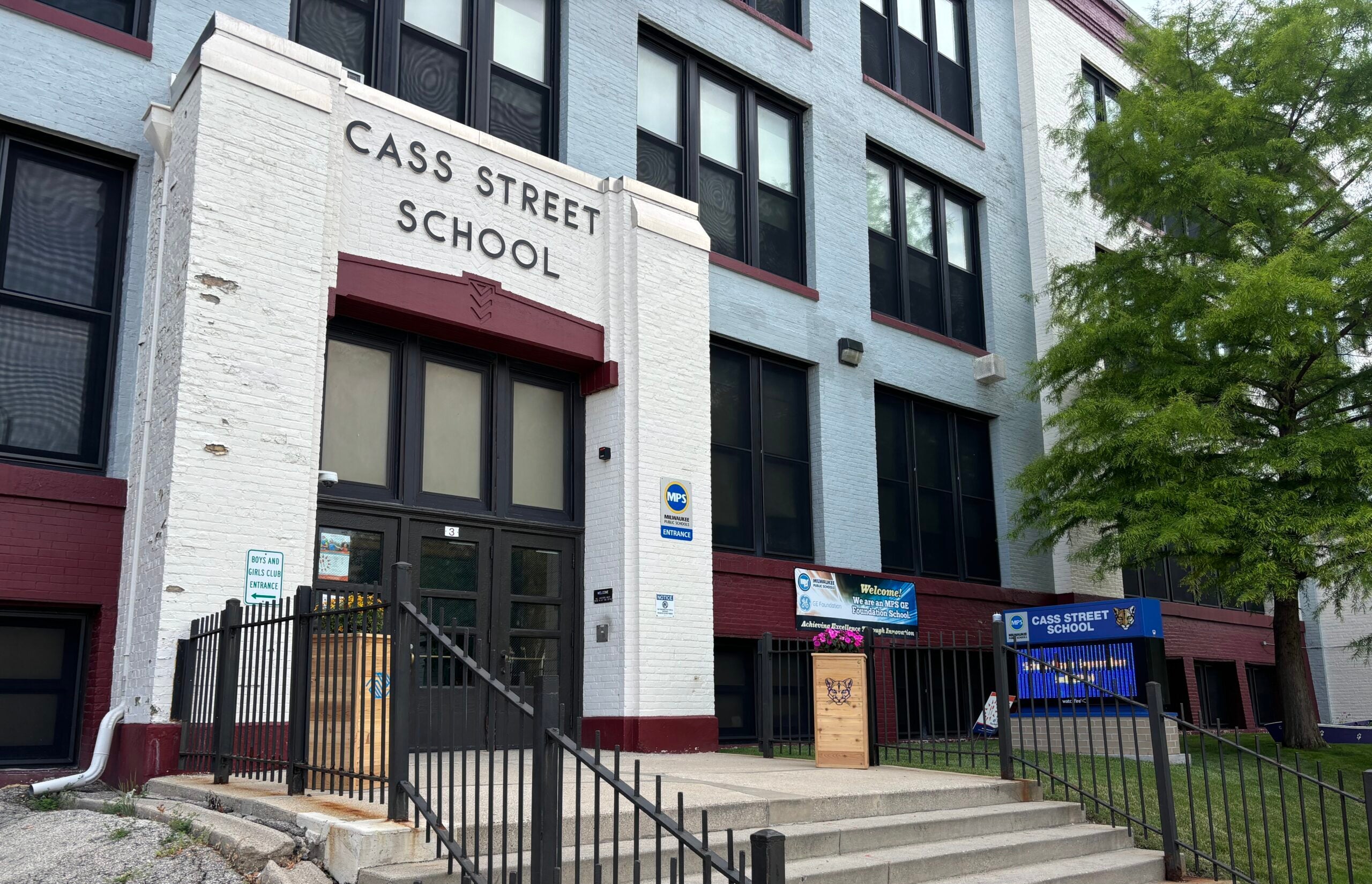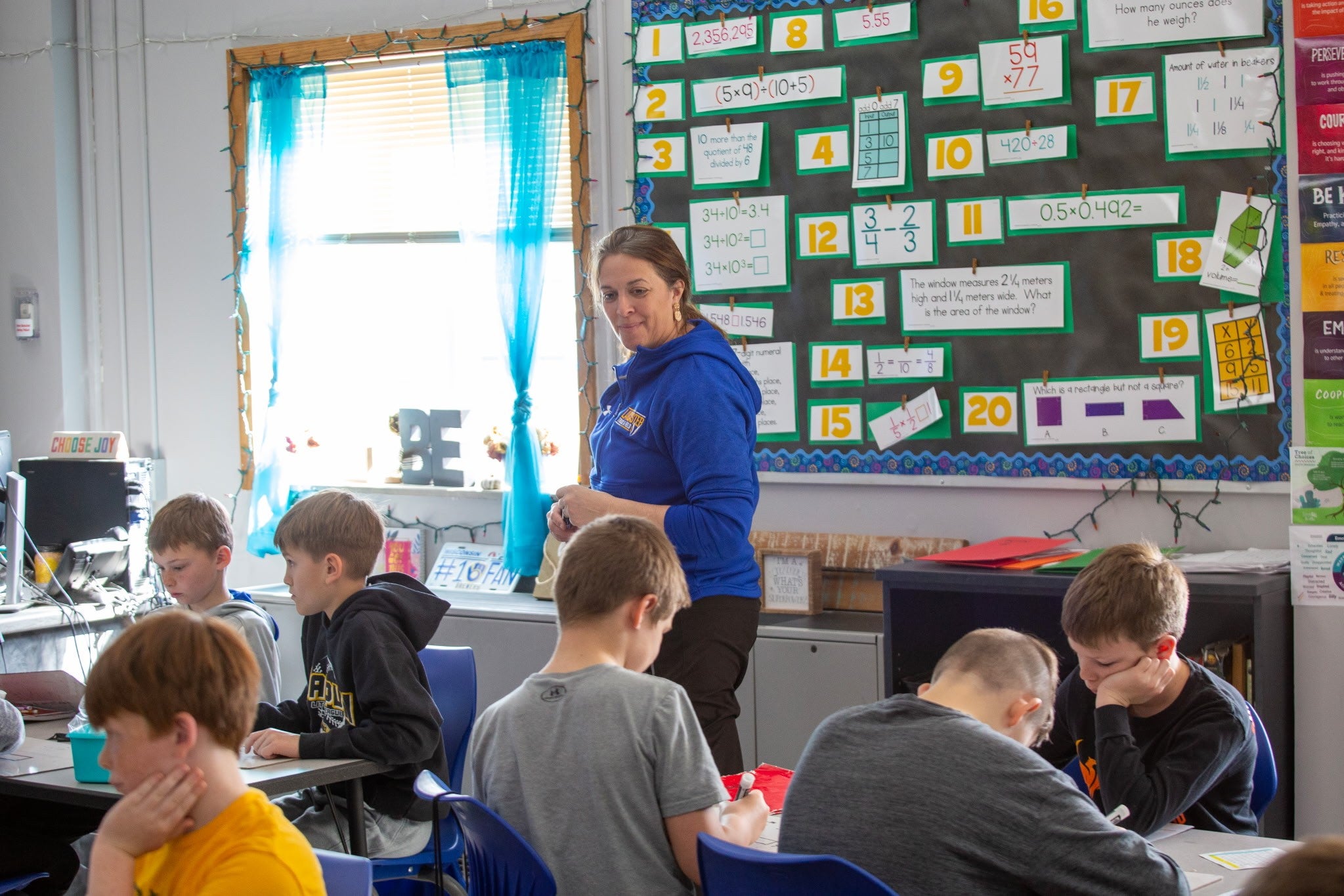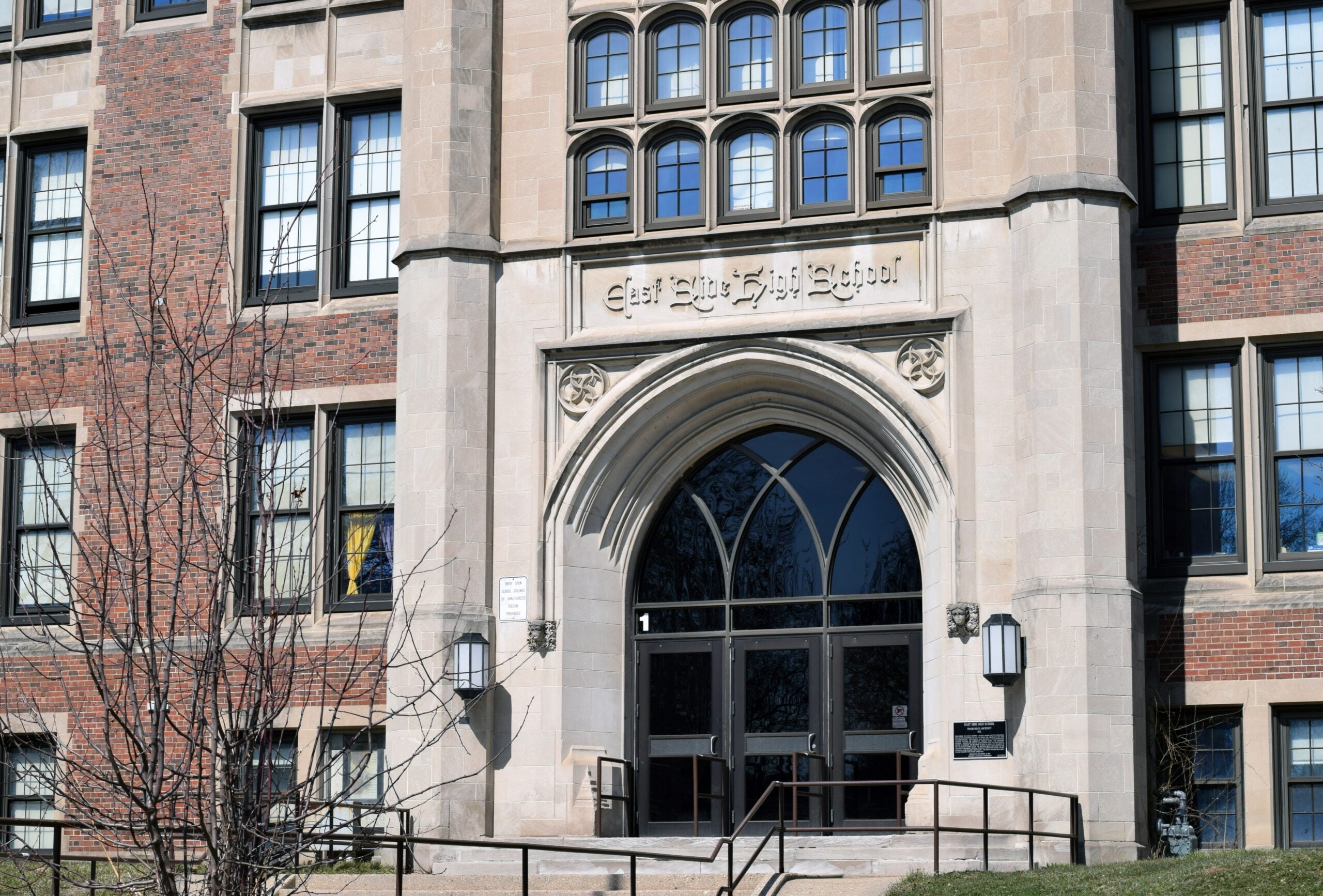Wisconsin teacher retirements dropped 17 percent last school year from the year before, according to data from the state Employee Trust Fund.
During the 2019-20 school year, 5,158 teachers retired — a spike unseen since at least 2018. But this past school year — 2020-21 — only 4,271 teachers retired. That’s despite worries that Wisconsin would lose even more teachers, worsening the teacher shortage that existed even before the pandemic began.
News with a little more humanity
WPR’s “Wisconsin Today” newsletter keeps you connected to the state you love without feeling overwhelmed. No paywall. No agenda. No corporate filter.
Connie Henke, an elementary school art teacher in Wisconsin Rapids, retired at the end of the 2020-21 school year.
“I had been teaching for 30 years, and that was my goal, so it was time for me,” she said. “I had a fabulous last year, and so it was the perfect time to retire.”
One of her favorite lessons was based on children’s book author and illustrator Eric Carle’s books. She’d have her kids make paper, cut it up and collage it together into animal shapes like those in Carle’s books. She also taught basket weaving and, the kids’ favorite, clay.
[[{“fid”:”1703191″,”view_mode”:”embed_landscape”,”fields”:{“format”:”embed_landscape”,”alignment”:”right”,”field_image_caption[und][0][value]”:”%3Cp%3EConnie%20Henke%2C%20an%20art%20teacher%20in%20the%20Wisconsin%20Rapids%20school%20district%2C%20retired%20at%20the%20end%20of%20last%20school%20year.%26nbsp%3B%3Cem%3EPhoto%20courtesy%20of%20Connie%20Henke.%26nbsp%3B%3C%2Fem%3E%3C%2Fp%3E%0A”,”field_image_caption[und][0][format]”:”full_html”,”field_file_image_alt_text[und][0][value]”:”Connie Henke, an art teacher in the Wisconsin Rapids”,”field_file_image_title_text[und][0][value]”:”Connie Henke, an art teacher in the Wisconsin Rapids”},”type”:”media”,”field_deltas”:{“1”:{“format”:”embed_landscape”,”alignment”:”right”,”field_image_caption[und][0][value]”:”%3Cp%3EConnie%20Henke%2C%20an%20art%20teacher%20in%20the%20Wisconsin%20Rapids%20school%20district%2C%20retired%20at%20the%20end%20of%20last%20school%20year.%26nbsp%3B%3Cem%3EPhoto%20courtesy%20of%20Connie%20Henke.%26nbsp%3B%3C%2Fem%3E%3C%2Fp%3E%0A”,”field_image_caption[und][0][format]”:”full_html”,”field_file_image_alt_text[und][0][value]”:”Connie Henke, an art teacher in the Wisconsin Rapids”,”field_file_image_title_text[und][0][value]”:”Connie Henke, an art teacher in the Wisconsin Rapids”}},”link_text”:false,”attributes”:{“alt”:”Connie Henke, an art teacher in the Wisconsin Rapids”,”title”:”Connie Henke, an art teacher in the Wisconsin Rapids”,”class”:”media-element file-embed-landscape media-wysiwyg-align-right”,”data-delta”:”1″}}]]”I really miss the kids, and their motivation,” she said. “The elementary kids just loved coming to art, and I really miss their creativity and their energy.”
Last year’s lower teacher retirement rate is in line with trends seen with turnover among school principals and superintendents, which have not seen a notable increase because of the pandemic, according to a recent report from the Wisconsin Policy Forum.
However, retirements are just one factor in the disruption of teaching staff. Those numbers don’t capture teachers who moved into administrative or other non-instructional roles at school, teachers who moved to other schools, or teachers who quit the profession for other jobs.
Civics and history teacher David Olson left his job of 11 years at Madison Memorial High School for a new role with the nonprofit short-form documentary organization Retro Report.
“I did not leave because of anger with the way schools are run or disenchantment with the state of education in general,” he said. “I left because I got a really cool opportunity, and some of those pandemic factors, I think, made it easier to let go.”
Olson said his favorite part of the job, by far, was getting to know and connecting with his students. But the Madison Metropolitan School District was virtual for most of last school year, and when students started returning to Memorial in spring, only about a third of his students came back in person.
“I just didn’t know my students as well,” he said. “I tried really hard, but it was impossible to build the same sort of relationship that I would have, had it been a normal school year.”
He had anticipated taking a job outside teaching for a company like Retro Report eventually, but figured it would be in five years or so. When he saw the opening for his current job, though, the combination of pull factors — better pay, more flexibility, calling more of his own shots — and push factors, like the difficulty of pandemic teaching, sped up his timeline.
Henke, in Wisconsin Rapids, said that as much as she loved teaching, and as much as she adores working with kids, she can see why it might not be the most appealing job to stay in, or to start.
“This year has been very trying and very hard for teachers, I think, because the community support keeps flip-flopping,” she said. “I think the pay, too, for what a student has to spend now to become a teacher, and then you’re getting out of school with all your student loans and not making very much money compared to friends that you graduate with.”
Even with retirement numbers down this year, Wisconsin has more projected teacher openings than students in its education schools who could fill them — and that’s assuming all the education school graduates go into teaching in Wisconsin.
“It takes special people to decide in this moment that they want to become an educator,” Olson said. “I’m really fearful what that looks like in 20 years — 20 years from now, are we going to be able to find teachers at all?”
Olson, who still has kids in school, said one of the indicators he’s been monitoring is substitute teachers.
Schools being able to fill their sub positions is a sign of a healthier teacher workforce, he said, because it’s often made up of recently retired teachers or new grads who didn’t find a full-time teaching job and are trying to build up their experience before the next school year. Madison, and other districts, have had trouble covering all their teacher absences, which may also lead to greater burnout for the staff teachers who have to give up their prep periods to cover absences.
“That gets hard really fast,” he said. “It wears you down — that’s something that is not sustainable, long-term, for education.”
Wisconsin Public Radio, © Copyright 2026, Board of Regents of the University of Wisconsin System and Wisconsin Educational Communications Board.
